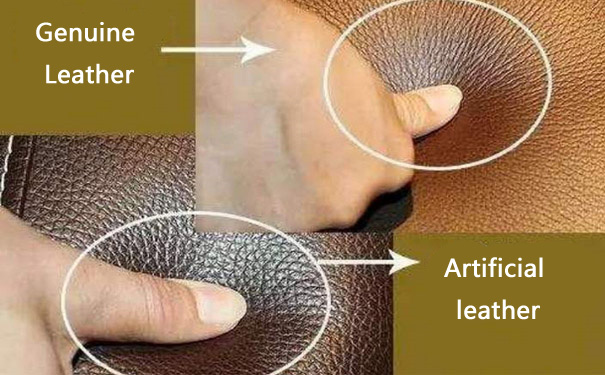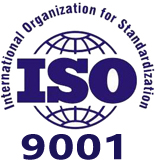How To Identify The Artificial Leather Bag
In the leather bags factory BOMKOO, both the genuine leather bags and artificial leather bags are produced. BOMKOO is often asked how to identify the artificial leather bags from the genuine leather bags. To identify the artificial leather bag need to identify the artificial leather first. See how BOMKOO says as below.

With the development of social science and technology, the artificial leather technology became more and more mature, and the quality has been greatly improved.
Especially in the field of artificial leather, it can be fake and true, similar to genuine leather in terms of breathability, flexibility, hand feeling and appearance, but the cost however, it is far lower than genuine leather. So it is more and more popular to be used on the handbags.
First of all, it should be distinguished from the pattern of leather, pores, etc. The surface of the genuine leather has clear pores and patterns. The yellow cowhide has fine pores. The yak has thick and sparse pores, and the goatskin has fishy scale pores. Pig skin pores are round and large, arranged in a triangle. The patterns and pores on the surface of these genuine leathers do exist and are unevenly distributed. There are animal fibers on the reverse side, the side sections are clearly distinguishable, and the lower layer has animal fibers. The leather fibers are erected by fingernails. The feeling of cashmere, a small amount of fiber can also fall, and the artificial leather can see the fabric on the reverse side, there is no animal fiber on the side, generally the skin has no pores, but some have artificial skin pores, there will be no obvious pores, some patterns are not obvious, or have a more regular artificial pattern, the pores are also quite consistent.
Touching the surface of the leather with your hand, it has a feeling of smoothness, softness, fullness and elasticity. In general, the artificial leather has a blemish, a rigid plate and poor softness. When the front side of the leather is bent downwards by 90 degrees, natural wrinkles will appear, and the folds will be respectively bent. Different parts, the thickness of the creases, the number of creases, and the obvious unevenness, can basically be considered that this is the dermis, because the real leather has a natural uneven fibrous structure, so the wrinkle pattern formed also has obvious unevenness. . The artificial leather feels like plastic, and the recovery is poor. The thickness of the crease is similar when bent.
The genuine leather has a very strong fur smell, even after treatment, the taste is more obvious, and the artificial leather products have a plastic taste, no fur taste.
By smelling the odor and looking at the ash state, the dermis burns a scent of hair, and the burnt ash is generally broken into powder, while the artificial leather burns more flames and shrinks rapidly. There is a smell of plastic that is hard to smell. It is sticky after burning and will harden into a block after cooling.
It can even reach the level of “chaos”. This requires more careful identification and selection. Generally speaking, imitation leather is processed by applying chemical raw materials to fabrics. The appearance of the imitation cowhide looks like cowhide; the appearance of the sheepskin looks like sheepskin and the leather is shiny. But look at the leather surface without pores, the bottom plate is not animal skin, squeezed hard, the leather surface will not wrinkle, or can be distinguished from the animal skin. However, there are also microporous film artificial leathers. In this case, the backing material can still be judged.
Difference between artificial leather and synthetic leather
Artificial leather: refers to a film or leather-like structure in which a resin such as polyvinyl chloride or the like is formed on a base fabric (including a base fabric) of a material such as woven fabric, non-woven fabric (non-woven fabric), or the like, and looks like natural leather. a material. Synthetic leather: refers to a structure in which a polyurethane resin film or a leather-like structure is formed on a base fabric of a material such as woven fabric, non-woven fabric (non-woven fabric), leather or the like by artificial synthesis, and looks like a material of natural leather.
In China, people are used to refer to artificial leather produced from polyvinyl chloride (PVC) resin as PVC artificial leather (abbreviated as artificial leather); artificial leather produced from polyurethane (PU) resin and traditional fabric is called PU artificial leather (referred to as PU leather); PU The artificial leather produced from resin and nonwoven fabric is called PU synthetic leather (referred to as synthetic leather). This is a classification of synthetic leather and artificial leather in some literature. The classification is mainly based on the coating material and the base material: the polyurethane resin is used as the coating material and the non-woven fabric is the base fabric for the synthetic leather, and the artificial leather is coated with the polyvinyl chloride or polyurethane resin and the traditional fabric is The base fabric is artificial leather.
Dissolution and infrared spectroscopy
A small piece of fabric is soaked in ethyl acetate for 20 minutes. There are three cases: (1) PU synthetic leather swells; (2) PVC artificial leather dissolves; (3) semi-PU synthetic leather swells in ethyl acetate, but under One layer dissolves. The swollen skin was rubbed out with stainless steel tweezers and placed on a filter paper to be flattened, then dried (or dried) with an infrared lamp, and the epidermis was analyzed by infrared spectroscopy. Other parts can be formed on the NaCl salt sheet with a solution, and the infrared spectrum can be made using the NaCl salt sheet and the formed film.
Infrared spectroscopy ATR technology
That is, the attenuated total reflection technique is to directly collect the infrared spectrum of PU synthetic leather and PVC artificial leather coating by Fourier transform infrared spectrometer, and qualitatively identify the two kinds of leather by comparing the absorption peaks of the infrared spectrum characteristics of the two leathers.
Gasoline soak
Put a small piece of fabric in gasoline for half an hour and then remove it. If it is PVC artificial leather, it will become hard and brittle. If it is PU synthetic leather, it will not become hard and brittle.
Combustion method
When burning, PVC artificial leather will emit green smoke, while PU synthetic leather is only black smoke.
When you know the differences between the genuine leather and artificial leather,then you will know how to identify the genuine leather handbags and artificial leather handbags. If you want to make your own brand handbags, you will be able to choose the preferred material freely.

With the development of social science and technology, the artificial leather technology became more and more mature, and the quality has been greatly improved.
Especially in the field of artificial leather, it can be fake and true, similar to genuine leather in terms of breathability, flexibility, hand feeling and appearance, but the cost however, it is far lower than genuine leather. So it is more and more popular to be used on the handbags.
First of all, it should be distinguished from the pattern of leather, pores, etc. The surface of the genuine leather has clear pores and patterns. The yellow cowhide has fine pores. The yak has thick and sparse pores, and the goatskin has fishy scale pores. Pig skin pores are round and large, arranged in a triangle. The patterns and pores on the surface of these genuine leathers do exist and are unevenly distributed. There are animal fibers on the reverse side, the side sections are clearly distinguishable, and the lower layer has animal fibers. The leather fibers are erected by fingernails. The feeling of cashmere, a small amount of fiber can also fall, and the artificial leather can see the fabric on the reverse side, there is no animal fiber on the side, generally the skin has no pores, but some have artificial skin pores, there will be no obvious pores, some patterns are not obvious, or have a more regular artificial pattern, the pores are also quite consistent.
Touching the surface of the leather with your hand, it has a feeling of smoothness, softness, fullness and elasticity. In general, the artificial leather has a blemish, a rigid plate and poor softness. When the front side of the leather is bent downwards by 90 degrees, natural wrinkles will appear, and the folds will be respectively bent. Different parts, the thickness of the creases, the number of creases, and the obvious unevenness, can basically be considered that this is the dermis, because the real leather has a natural uneven fibrous structure, so the wrinkle pattern formed also has obvious unevenness. . The artificial leather feels like plastic, and the recovery is poor. The thickness of the crease is similar when bent.
The genuine leather has a very strong fur smell, even after treatment, the taste is more obvious, and the artificial leather products have a plastic taste, no fur taste.
By smelling the odor and looking at the ash state, the dermis burns a scent of hair, and the burnt ash is generally broken into powder, while the artificial leather burns more flames and shrinks rapidly. There is a smell of plastic that is hard to smell. It is sticky after burning and will harden into a block after cooling.
It can even reach the level of “chaos”. This requires more careful identification and selection. Generally speaking, imitation leather is processed by applying chemical raw materials to fabrics. The appearance of the imitation cowhide looks like cowhide; the appearance of the sheepskin looks like sheepskin and the leather is shiny. But look at the leather surface without pores, the bottom plate is not animal skin, squeezed hard, the leather surface will not wrinkle, or can be distinguished from the animal skin. However, there are also microporous film artificial leathers. In this case, the backing material can still be judged.
Difference between artificial leather and synthetic leather
Artificial leather: refers to a film or leather-like structure in which a resin such as polyvinyl chloride or the like is formed on a base fabric (including a base fabric) of a material such as woven fabric, non-woven fabric (non-woven fabric), or the like, and looks like natural leather. a material. Synthetic leather: refers to a structure in which a polyurethane resin film or a leather-like structure is formed on a base fabric of a material such as woven fabric, non-woven fabric (non-woven fabric), leather or the like by artificial synthesis, and looks like a material of natural leather.
In China, people are used to refer to artificial leather produced from polyvinyl chloride (PVC) resin as PVC artificial leather (abbreviated as artificial leather); artificial leather produced from polyurethane (PU) resin and traditional fabric is called PU artificial leather (referred to as PU leather); PU The artificial leather produced from resin and nonwoven fabric is called PU synthetic leather (referred to as synthetic leather). This is a classification of synthetic leather and artificial leather in some literature. The classification is mainly based on the coating material and the base material: the polyurethane resin is used as the coating material and the non-woven fabric is the base fabric for the synthetic leather, and the artificial leather is coated with the polyvinyl chloride or polyurethane resin and the traditional fabric is The base fabric is artificial leather.
Dissolution and infrared spectroscopy
A small piece of fabric is soaked in ethyl acetate for 20 minutes. There are three cases: (1) PU synthetic leather swells; (2) PVC artificial leather dissolves; (3) semi-PU synthetic leather swells in ethyl acetate, but under One layer dissolves. The swollen skin was rubbed out with stainless steel tweezers and placed on a filter paper to be flattened, then dried (or dried) with an infrared lamp, and the epidermis was analyzed by infrared spectroscopy. Other parts can be formed on the NaCl salt sheet with a solution, and the infrared spectrum can be made using the NaCl salt sheet and the formed film.
Infrared spectroscopy ATR technology
That is, the attenuated total reflection technique is to directly collect the infrared spectrum of PU synthetic leather and PVC artificial leather coating by Fourier transform infrared spectrometer, and qualitatively identify the two kinds of leather by comparing the absorption peaks of the infrared spectrum characteristics of the two leathers.
Gasoline soak
Put a small piece of fabric in gasoline for half an hour and then remove it. If it is PVC artificial leather, it will become hard and brittle. If it is PU synthetic leather, it will not become hard and brittle.
Combustion method
When burning, PVC artificial leather will emit green smoke, while PU synthetic leather is only black smoke.
When you know the differences between the genuine leather and artificial leather,then you will know how to identify the genuine leather handbags and artificial leather handbags. If you want to make your own brand handbags, you will be able to choose the preferred material freely.

